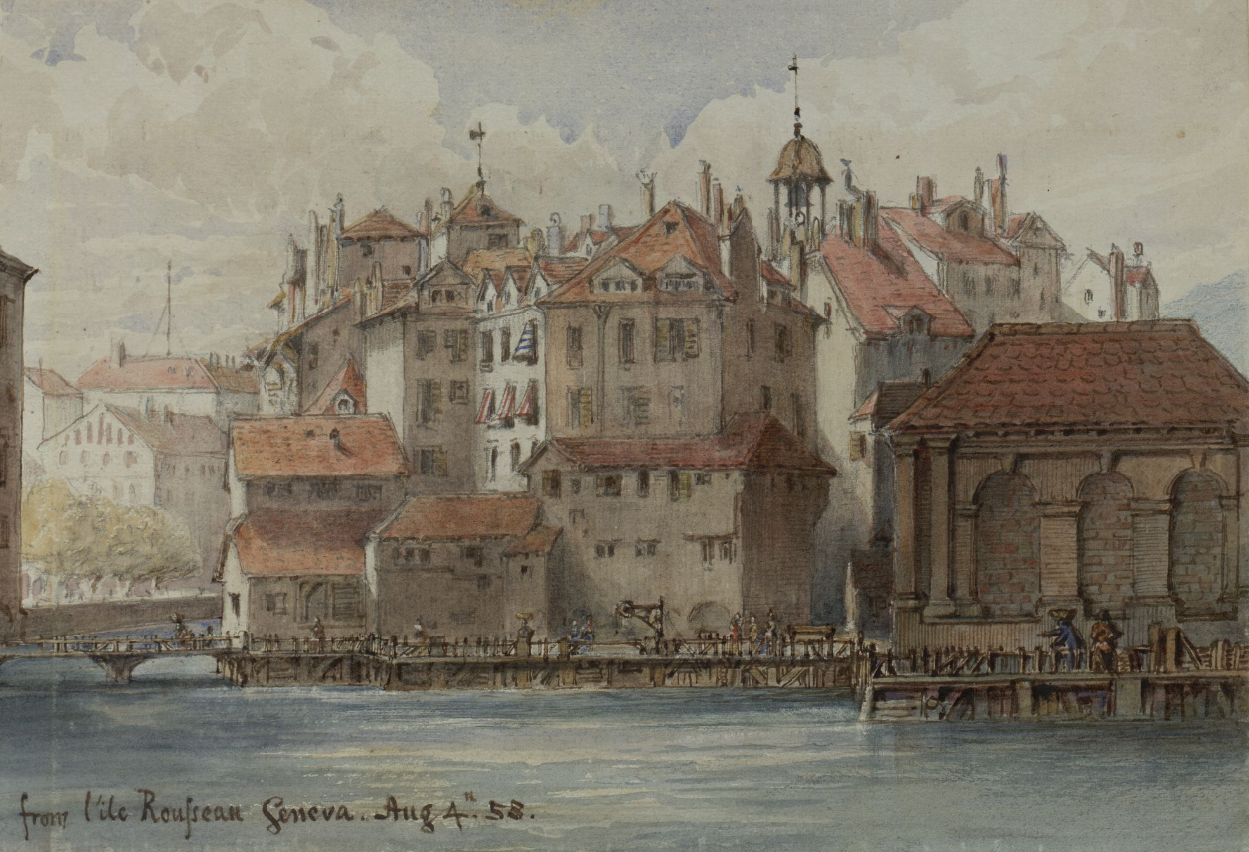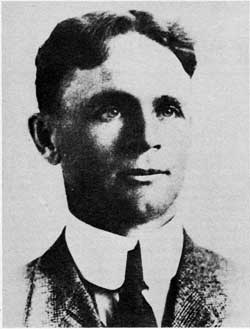|
Edith Rogers (Manitoba Politician)
Edith Florence Rogers (born Edith Florence McTavish, April 26, 1876—April 19, 1947) was a Métis politician in Manitoba, Canada. She served in the Legislative Assembly of Manitoba from 1920 to 1932, as a member of the Manitoba Liberal Party. She was the first woman ever elected to the legislature. Early life and family Edith Florence McTavish was born at Norway House, Manitoba on 26 April 1876, the daughter of Métis parents Lydia Catherine Christie and Donald C. McTavish, Chief Factor of the Hudson's Bay Company. Edith's mother Lydia was the daughter of William Christie (HBC chief factor at Edmonton) and Mary Sinclair. Rogers had strong family connections to Manitoba's past. Her maternal great-grandfather, Alexander Christie, served as Governor of Assiniboia on two occasions, and supervised the construction of Fort Garry. His son, William J. Christie, worked for the Hudson's Bay Company in Manitoba from 1843 to 1873, and was named Inspecting Chief Factor in 1868. Roger ... [...More Info...] [...Related Items...] OR: [Wikipedia] [Google] [Baidu] |
World War I
World War I (28 July 1914 11 November 1918), often abbreviated as WWI, was List of wars and anthropogenic disasters by death toll, one of the deadliest global conflicts in history. Belligerents included much of Europe, the Russian Empire, the United States, and the Ottoman Empire, with fighting occurring throughout Europe, the Middle East, Africa, the Pacific Ocean, Pacific, and parts of Asia. An estimated 9 million soldiers were killed in combat, plus another 23 million wounded, while 5 million civilians died as a result of military action, hunger, and disease. Millions more died in Genocides in history (World War I through World War II), genocides within the Ottoman Empire and in the Spanish flu, 1918 influenza pandemic, which was exacerbated by the movement of combatants during the war. Prior to 1914, the European great powers were divided between the Triple Entente (comprising French Third Republic, France, Russia, and British Empire, Britain) and the Triple A ... [...More Info...] [...Related Items...] OR: [Wikipedia] [Google] [Baidu] |
World War II
World War II or the Second World War, often abbreviated as WWII or WW2, was a world war that lasted from 1939 to 1945. It involved the World War II by country, vast majority of the world's countries—including all of the great powers—forming two opposing military alliances: the Allies of World War II, Allies and the Axis powers. World War II was a total war that directly involved more than 100 million Military personnel, personnel from more than 30 countries. The major participants in the war threw their entire economic, industrial, and scientific capabilities behind the war effort, blurring the distinction between civilian and military resources. Air warfare of World War II, Aircraft played a major role in the conflict, enabling the strategic bombing of population centres and deploying the Atomic bombings of Hiroshima and Nagasaki, only two nuclear weapons ever used in war. World War II was by far the List of wars by death toll, deadliest conflict in hu ... [...More Info...] [...Related Items...] OR: [Wikipedia] [Google] [Baidu] |
Geneva
Geneva ( ; french: Genève ) frp, Genèva ; german: link=no, Genf ; it, Ginevra ; rm, Genevra is the second-most populous city in Switzerland (after Zürich) and the most populous city of Romandy, the French-speaking part of Switzerland. Situated in the south west of the country, where the Rhône exits Lake Geneva, it is the capital of the Republic and Canton of Geneva. The city of Geneva () had a population 201,818 in 2019 (Jan. estimate) within its small municipal territory of , but the Canton of Geneva (the city and its closest Swiss suburbs and exurbs) had a population of 499,480 (Jan. 2019 estimate) over , and together with the suburbs and exurbs located in the canton of Vaud and in the French departments of Ain and Haute-Savoie the cross-border Geneva metropolitan area as officially defined by Eurostat, which extends over ,As of 2020, the Eurostat-defined Functional Urban Area of Geneva was made up of 93 Swiss communes and 158 French communesFederal Statistical O ... [...More Info...] [...Related Items...] OR: [Wikipedia] [Google] [Baidu] |
1927 Manitoba General Election
The 1927 Manitoba general election was held on 28 June 1927 to elect Members of the Legislative Assembly of the Province of Manitoba, Canada. The result was a second consecutive victory for Manitoba farmers, following its 1922 win. This was the first election in Manitoba history to elect MLAs through casting of ranked ballots in all districts. Ten MLAs were elected in Winnipeg through Single transferable vote, as they had done since 1920. The other districts now began to elect MLAs through Instant-runoff voting. The result was a second consecutive victory for the Progressive Party of Manitoba, which was supported by the United Farmers of Manitoba. The Progressives, led by Premier John Bracken, won twenty-nine seats out of fifty-five to win their second majority government. During the campaign, the Progressives stressed that they were not a party in the traditional sense and promised "A business (not a party) government". Many Progressive candidates simply described themselv ... [...More Info...] [...Related Items...] OR: [Wikipedia] [Google] [Baidu] |
John Bracken
John Bracken (June 22, 1883 – March 18, 1969) was a Canadian agronomist and politician who was the 11th and longest-serving premier of Manitoba (1922–1943) and later the leader of the Progressive Conservative Party of Canada (1942–1948). Bracken was born in Ontario, and was a professor of animal husbandry at the University of Saskatchewan before moving to Manitoba in 1920. A political outsider, he was named leader of the Progressive Party of Manitoba following its upset victory in the 1922 Manitoba general election. During his tenure as premier of Manitoba, he implemented independent, non-partisan policies dominated by rural interests and opposed organized labour. He oversaw the creation of a universal pension, the provincial income tax, and reductions in spending on health, education and welfare as well as the replacement of the first past the post voting system with alternative voting. He pursued development by promoting staple industries such as mining, timber an ... [...More Info...] [...Related Items...] OR: [Wikipedia] [Google] [Baidu] |
1922 Manitoba General Election
The 1922 Manitoba general election was held on July 18, 1922 to elect Members of the Legislative Assembly of the Province of Manitoba, Canada. The United Farmers of Manitoba won a narrow majority in the legislature. As in the previous election of 1920, the city of Winnipeg elected ten members by the single transferable ballot. All other constituencies elected one member by first-past-the-post balloting. Before the next election, the 1927 Manitoba general election, the districts outside Winnipeg switched to Instant-runoff voting. Summary This election was a watershed moment in Manitoba's political history. Since the formal introduction of partisan government in 1888, Manitoba had been governed alternately by the Liberal Party and the Conservative Party. Although the previous election of 1920 sustained the Liberals in power, it also saw the two-party dichotomy weakened by the rise of farmer and labour parliamentary blocs. In 1922, the old parties were mostly swept away ... [...More Info...] [...Related Items...] OR: [Wikipedia] [Google] [Baidu] |
United Farmers Of Manitoba
The Progressive Party of Manitoba, Canada, was a political party that developed from the United Farmers of Manitoba (UFM), an agrarian movement that became politically active following World War I. See also *List of political parties in Canada *Progressive Party of Canada The Progressive Party of Canada, formally the National Progressive Party, was a federal-level political party in Canada in the 1920s until 1930. It was linked with the provincial United Farmers parties in several provinces, and it spawned the P ... References 1920 establishments in Manitoba 1932 disestablishments in Manitoba Agrarian parties in Canada Defunct agrarian political parties Defunct political parties in Canada Political parties disestablished in 1932 Political parties established in 1920 Provincial political parties in Manitoba Progressivism in Canada United Farmers {{Canada-party-stub ... [...More Info...] [...Related Items...] OR: [Wikipedia] [Google] [Baidu] |
1920 Manitoba General Election
The 1920 Manitoba general election was held on June 29, 1920 to elect members of the Legislative Assembly of the Province of Manitoba, Canada. The election resulted in a fragmented parliament, with no group holding effective power over the legislature. Norris's Liberals were re-elected. They remained the largest party, but were reduced to a minority government with 21 seats out of 55. This was the first general election in which women could vote and run for office. Edith Rogers was elected in this election, becoming the first woman elected to the Manitoba Legislature. This was also the first election where Single Transferable Voting was used to elect the Winnipeg MLAs, now ten in number. Background Between the previous 1915 election and the 1920 campaign, Manitoba experienced profound social and cultural change. Since the formal introduction of partisan politics in 1888, Manitoba had been dominated by the Liberal and Conservative parties, which governed the province in s ... [...More Info...] [...Related Items...] OR: [Wikipedia] [Google] [Baidu] |
Single Transferable Ballot
Single transferable vote (STV) is a multi-winner electoral system in which voters cast a single vote in the form of a ranked-choice ballot. Voters have the option to rank candidates, and their vote may be transferred according to alternate preferences if their preferred candidate is eliminated, so that their vote is used to elect someone they prefer over others in the running. STV aims to approach proportional representation based on votes cast in the district where it is used, so that each vote is worth about the same as another. Under STV, no one party or voting bloc can take all the seats in a district unless the number of seats in the district is very small or almost all the votes cast are cast for one party's candidates (which is seldom the case). This makes it different from other district voting systems. In majoritarian/plurality systems such as first-past-the-post (FPTP), instant-runoff voting (IRV; also known as the alternative vote), block voting, and ranked-vote ... [...More Info...] [...Related Items...] OR: [Wikipedia] [Google] [Baidu] |
Winnipeg (provincial Electoral District)
Winnipeg was a provincial electoral district in the Canadian province of Manitoba, which was represented in the Legislative Assembly of Manitoba. Consisting of the city of Winnipeg, the district originally existed from 1870 to 1883, returning a single member to the assembly. The district was named Winnipeg and St. John for the election of 1870 only, and Winnipeg thereafter. In 1883, it was divided into the new districts of Winnipeg North and Winnipeg South; a third district of Winnipeg Centre was created in 1888. In 1920, the district was reconstituted as a multiple member district covering the whole city of Winnipeg. This city-wide district returned ten members to the legislature who were all elected citywide through Single transferable vote form of proportional representation. Patrick Boyer, ''Direct Democracy in Canada: The History and Future of Referendums''. Dundurn Press, 1996. . p. 95. The district existed in this form until 1949, when the district was divided into three ... [...More Info...] [...Related Items...] OR: [Wikipedia] [Google] [Baidu] |


